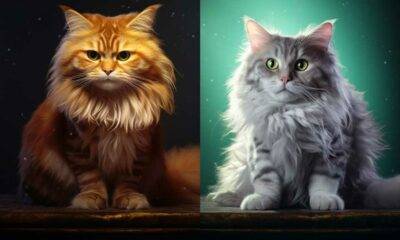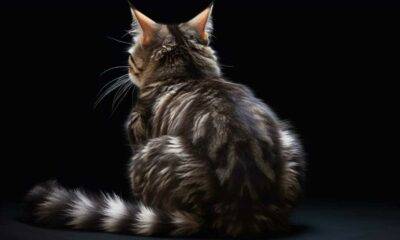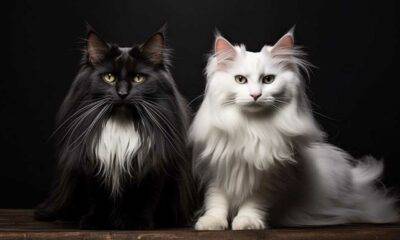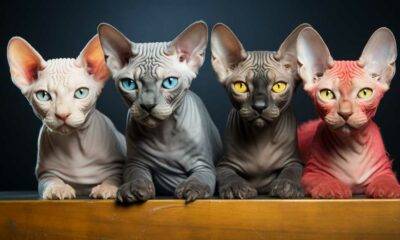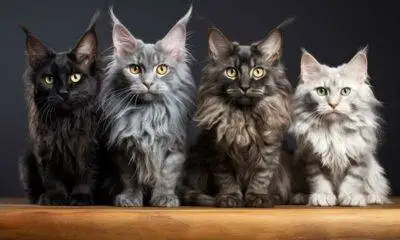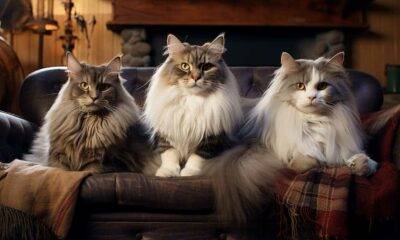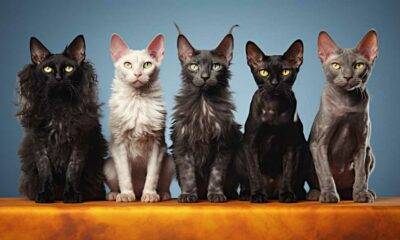cats
11 Top Homemade Diet Tips for Indoor Cats

11 Top Homemade Diet Tips for Indoor Cats
Did you know that nearly 60% of indoor cats are overweight or obese? Maintaining a healthy weight and overall well-being is crucial for your cat’s health.
In this article, we will provide you with 11 homemade diet tips for indoor cats. By following these tips, you can ensure that your cat receives a nutritious and balanced diet that will keep them happy and healthy.
We will discuss their nutritional needs, selecting quality ingredients, and incorporating variety into their meals. Let’s explore how to create a homemade diet that will satisfy your indoor cat and keep them purring with satisfaction.
Key Takeaways
With these homemade diet tips for indoor cats, you can ensure that your beloved pet gets the nutrition they need for a healthy and happy life. It’s important to understand their specific dietary requirements, choose high-quality ingredients, and maintain a balanced intake of macronutrients. Varying their diet and practicing moderation, as well as following safe meal preparation techniques and avoiding harmful foods, are also crucial for their well-being. By supplementing their diet appropriately and taking proper precautions, you can provide them with the best care and nourishment they deserve.
Understanding Nutritional Needs
Understanding the Nutritional Needs of Your Indoor Cat
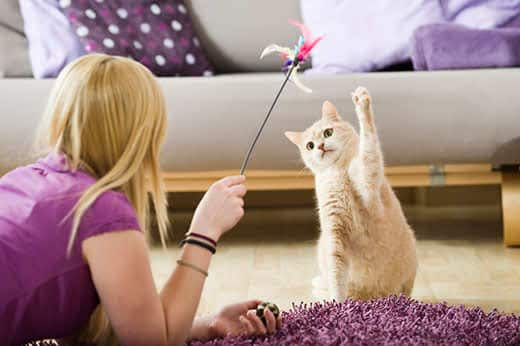
To ensure the health and happiness of your indoor cat, it’s important to have a good understanding of their nutritional needs. The diet plays a significant role in their overall well-being, and considering homemade cat food can be a beneficial option.
When preparing homemade cat food, it’s essential to provide a balanced and complete diet that includes all the necessary nutrients. This includes incorporating high-quality protein, essential fatty acids, vitamins, and minerals. Protein is especially important for muscle development and overall health, so it should be a significant part of their diet.
When selecting ingredients for homemade cat food, opt for fresh and high-quality meats like chicken or fish. It’s also advisable to consult with a veterinarian or a veterinary nutritionist to ensure that your cat’s homemade diet meets all their nutritional requirements.
Selecting Quality Ingredients
Choosing Quality Ingredients for Homemade Cat Food
When it comes to selecting ingredients for your homemade cat food, it’s important to prioritize high-quality meats and fresh produce. Here are three key factors to consider when choosing ingredients for your cat’s homemade diet:
- Opt for lean meats: Make sure to choose lean cuts of meat such as chicken, turkey, or beef. These meats are rich in essential proteins that your cat needs. Avoid using fatty or processed meats, as they can contribute to weight gain and other health issues.
- Include a variety of vegetables: Incorporating a mix of vegetables like carrots, peas, and spinach is essential to provide your cat with the necessary vitamins and minerals. Remember to cook the vegetables before serving them to your cat to aid in digestion.
- Practice portion control: It’s crucial to measure the amount of food you give to your cat to ensure they receive the right balance of nutrients. Overfeeding can lead to obesity and other health problems, so be mindful of portion sizes.
By following these cooking techniques and being mindful of portion control, you can provide your indoor cat with a nutritious and balanced homemade diet. Remember, the quality of ingredients plays a crucial role in promoting your cat’s overall health and well-being.
[QUOTE]: ‘Feeding your cat a homemade diet allows you to have better control over the ingredients they consume, ensuring they receive optimal nutrition.’
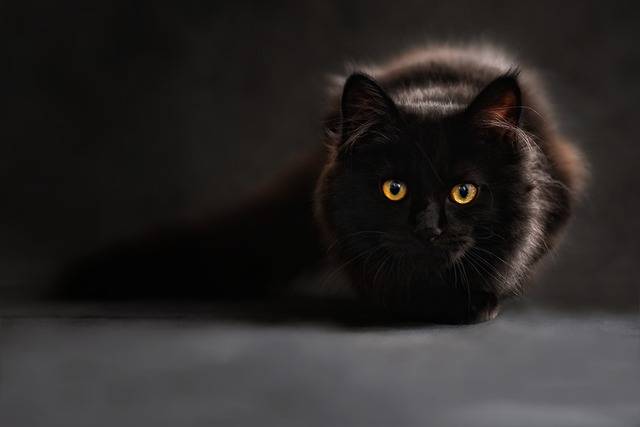
Balancing Macronutrients
To ensure your cat’s homemade diet provides all the necessary nutrients, it’s important to focus on balancing macronutrients. Macronutrients, including proteins, fats, and carbohydrates, are essential for your cat’s overall health and wellbeing.
When preparing your cat’s food, consider the benefits of feeding raw. Raw foods retain more nutrients and closely resemble a cat’s natural diet, which can promote better digestion and a healthier coat.
Additionally, portion control plays a crucial role in maintaining your cat’s weight and preventing obesity-related health issues. Be sure to measure the appropriate amount of food based on your cat’s size and activity level, and avoid overfeeding.
By balancing macronutrients and practicing portion control, you can ensure that your cat receives a well-rounded diet.
Now, let’s move on to the next section, which discusses incorporating variety and moderation for optimal feline nutrition.
Incorporating Variety and Moderation
Incorporating Variety and Moderation in Your Cat’s Diet
To ensure optimal nutrition for your cat, it’s important to regularly include a variety of foods in their homemade diet. By introducing different flavors and textures, you can keep your feline friend engaged and interested during mealtime. Here are three reasons why incorporating variety and moderation is essential for your cat’s diet:

- Nutritional balance: Different foods contain varying amounts of important nutrients. By offering a variety of ingredients, you can ensure that your cat receives all the necessary vitamins, minerals, and antioxidants to support their overall health.
- Preventing boredom: Cats, like humans, can become bored with eating the same food every day. By incorporating different flavors and textures into their meals, you can keep things exciting and prevent them from becoming picky eaters.
- Allergy prevention: Introducing new ingredients can help prevent food allergies from developing. By exposing your cat to a range of foods, you reduce the risk of them developing intolerances or sensitivities to specific ingredients.
Preparing Meals Safely
Ensuring the Safety of Homemade Cat Meals
To keep your cat’s homemade meals safe, it’s important to follow proper food handling practices. This means taking steps to prevent contamination and safeguard your cat’s health.
One crucial aspect is storing ingredients correctly to maintain freshness and minimize spoilage. Keep dry ingredients in airtight containers, stored in a cool and dry place that’s away from direct sunlight. For perishable ingredients, refrigerate or freeze them to prevent the growth of harmful bacteria.
When handling raw meat or fish, make sure to wash your hands thoroughly before and after. It’s also essential to use separate cutting boards and utensils to avoid cross-contamination. After preparing your cat’s meals, be sure to clean all surfaces and utensils with hot, soapy water.
These practices can help ensure that your beloved indoor cat receives safe and nutritious homemade meals.
Managing Portions and Weight
Managing your indoor cat’s diet involves paying attention to portion sizes and weight. It’s important to practice portion control to ensure that your cat maintains a healthy weight. Here are three tips to help you effectively manage your cat’s portions:
- Measure their food: Use a measuring cup to accurately portion out your cat’s meals. This will prevent overfeeding and support a healthy weight.
- Stick to a feeding schedule: Establish a consistent feeding routine for your cat. This not only helps with portion control but also regulates their metabolism.
- Incorporate exercise into their routine: Encourage your cat to stay active by providing toys, scratching posts, and playtime. Regular exercise plays a vital role in maintaining a healthy weight and preventing obesity.
By implementing these portion control strategies and incorporating an exercise routine, you can ensure that your indoor cat stays at a healthy weight.
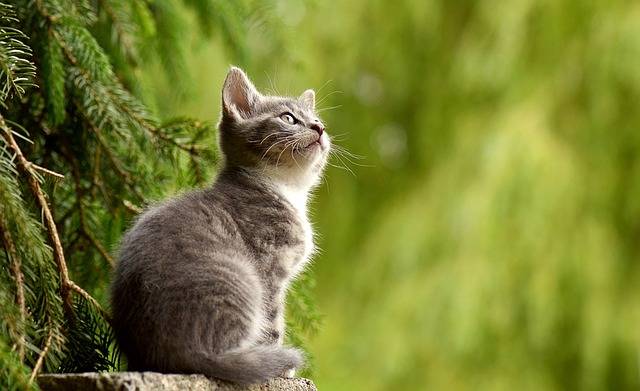
Now, let’s move on to the next topic: ensuring proper hydration.
Ensuring Proper Hydration
Ensuring Proper Hydration
To keep your cat healthy, it’s crucial to make sure they stay hydrated. Adequate hydration is essential for maintaining organ function, promoting digestion, and preventing urinary tract issues.
Cats don’t have a strong thirst drive, so it’s important to encourage them to drink enough water. Make sure to provide fresh, clean water in multiple locations throughout your home. You can also consider using a cat fountain to make drinking more appealing.
Wet food can also help with hydration since it has a higher water content compared to dry food. Additionally, adding water to your cat’s meals or offering them bone broth as a hydrating treat can be beneficial.
Keep an eye on your cat’s water intake and provide them with different options to ensure their well-being.
Identifying Harmful Foods
Tips for Identifying Harmful Foods for Your Cat
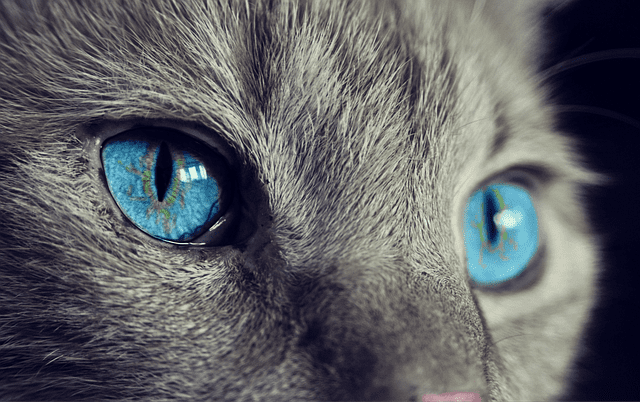
To keep your cat safe and healthy, it’s important to be aware of which foods can be harmful to them. Here are three key things to consider when identifying harmful foods for your indoor cat:
- Watch out for toxic plants: Some common household plants, like lilies, azaleas, and tulips, can be toxic to cats if they eat them. It’s crucial to keep these plants out of your cat’s reach to prevent accidental ingestion.
- Be mindful of allergies: Cats can have allergies, just like humans. Dairy products, wheat, and fish are common food allergens for cats. If you notice signs of an allergic reaction, such as itching, vomiting, or diarrhea, consult your veterinarian to determine the cause and make necessary changes to their diet.
- Avoid human food hazards: Certain foods that are safe for us can be toxic to cats. Chocolate, onions, and garlic are examples of foods that should be kept away from your cat’s diet.
By staying informed about these potential dangers, you can ensure that the homemade diet you provide for your cat is free from harmful ingredients.
Now, let’s move on to the next section and discuss how to supplement their diet effectively.
Supplementing the Homemade Diet
Supplementing Your Cat’s Homemade Diet
To ensure your indoor cat gets a balanced diet, it’s important to add appropriate supplements to their homemade meals. Adding vitamins can help fill any nutritional gaps in their diet. Cats need essential nutrients like vitamin A, vitamin D, and taurine, which may not be present in sufficient amounts in homemade food alone. It’s crucial to consult with your veterinarian to determine the right type and dosage of supplements for your cat.
Introducing new flavors and variety to your cat’s meals is also beneficial. It helps prevent boredom and ensures they receive a range of nutrients. You can add small amounts of cooked vegetables or fruits, such as carrots or blueberries, to provide additional vitamins and antioxidants. Remember to moderate the amount and always monitor your cat’s reaction to new supplements and flavors.
Your cat’s health is a priority, so it’s important to make informed decisions about their diet.

Avoiding Toxic Foods
To ensure the health and well-being of your indoor cat, it’s important to be mindful of the foods that should be avoided.
Here are three common foods that can be toxic to your feline friend:
- Chocolate: While chocolate may be a delightful treat for humans, it can be highly toxic to cats. This is because chocolate contains theobromine, which cats can’t effectively metabolize. If a cat ingests chocolate, it can lead to symptoms such as vomiting, diarrhea, rapid breathing, and even seizures.
- Onions and Garlic: Onions and garlic belong to the Allium family and contain compounds that can damage a cat’s red blood cells. Even small amounts of onions or garlic can cause anemia, weakness, and gastrointestinal upset in cats. It’s crucial to avoid feeding your cat any food that contains onions or garlic, including seasonings and sauces.
- Grapes and Raisins: Grapes and raisins can be harmful to cats and can even cause kidney failure. Even a small amount can lead to symptoms like vomiting, increased thirst, and decreased urine production. It’s best to keep these fruits out of your cat’s reach.
Safe Meal Preparation Techniques
When preparing meals for your indoor cat, it’s important to follow safe food handling techniques. This includes proper storage and cooking methods.
To keep your cat’s meals fresh and high-quality, store the prepared food in airtight containers in the refrigerator. This helps prevent the growth of bacteria and spoilage.
When cooking homemade meals for your cat, make sure to use safe cooking methods. Cook the meat thoroughly to eliminate any harmful bacteria or parasites. Avoid using excessive amounts of oil, salt, or seasoning, as they can be harmful to your cat’s digestion.
Frequently Asked Questions
Can Indoor Cats Have the Same Diet as Outdoor Cats?
Indoor cats can have a similar diet to outdoor cats, but there are some differences. While outdoor cats have the advantage of getting more exercise and engaging in hunting activities, indoor cats rely on their owners to provide them with appropriate nutrition and stimulation. It’s important to ensure that indoor cats receive a balanced diet that meets their nutritional needs. Additionally, providing them with interactive toys, scratching posts, and playtime can help keep them mentally and physically active. By taking these steps, you can help your indoor cat lead a healthy and fulfilling life.
How Often Should I Change My Indoor Cat’s Diet?
How often should you change your indoor cat’s diet? It is recommended to provide a balanced nutrition for your cat by changing their diet every few months. This helps ensure they receive the necessary variety of nutrients and meet their specific dietary needs. Keeping their diet fresh and healthy is important for their overall well-being.
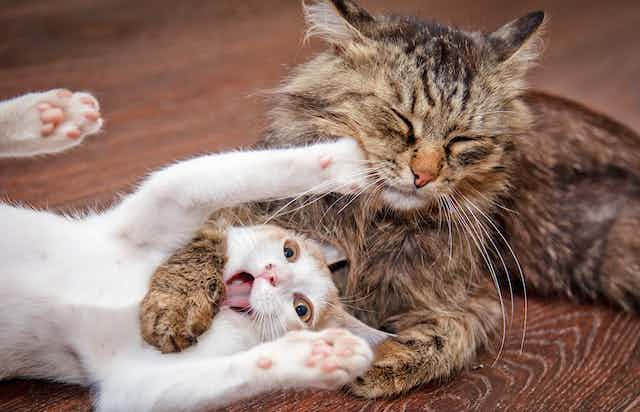
Are Homemade Diets Suitable for Cats With Specific Health Conditions?
Homemade diets can be a good option for cats with specific health conditions such as kidney disease or diabetes. They offer the advantage of ingredient control and can be customized to meet your cat’s unique dietary requirements. Unlike commercial cat food, homemade diets allow you to have a hands-on approach in providing the necessary nutrients for your cat’s health. It is important to consult with a veterinarian or a veterinary nutritionist to ensure that the homemade diet is balanced and meets all the nutritional needs of your cat. By working closely with professionals, you can create a homemade diet that supports your cat’s specific health condition while providing them with a healthy and nourishing meal.
What Are Some Signs That My Indoor Cat Is Not Getting the Right Nutrients?
Not sure if your indoor cat is getting the right nutrients? Keep an eye out for signs such as a dull coat, weight loss, and a lack of appetite. It’s important to provide your cat with a balanced diet that includes meat, vegetables, and supplements to ensure they receive all the necessary nutrients. By incorporating these elements into their diet, you can help keep your indoor cat healthy and thriving.
Can I Feed My Indoor Cat a Vegetarian or Vegan Diet?
Feeding your indoor cat a vegetarian or vegan diet is not recommended. Cats are obligate carnivores, which means they require specific nutrients that can only be found in animal products. It is crucial to provide them with a balanced diet that meets their nutritional needs.
Conclusion
By implementing these homemade diet tips for indoor cats, you can ensure that your beloved pet receives the necessary nutrition for a healthy and happy life.
It’s important to understand their specific dietary requirements, choose high-quality ingredients, and maintain a balanced intake of macronutrients.
Incorporating variety and practicing moderation, as well as following safe meal preparation techniques and avoiding harmful foods, are also crucial for their well-being.
By supplementing their diet appropriately and taking proper precautions, you can provide them with the best possible care and nourishment they deserve.

table, th, td { border: 1px solid black; border-collapse: collapse; padding: 10px;}
cats
Little Kitten My Favorite Cat – Play Fun Pet Care Kids Game – Fun Games For Kids & Children

By: ArcadeGaming
Title: Little Kitten My Favorite Cat – Play Fun Pet Care Kids Game – Fun Games For Kids & Children
Sourced From: www.youtube.com/watch?v=Hyju6Gwo_gs
cats
Guy Thinks He’s Lost His Foster Cat | The Dodo

By: The Dodo
Title: Guy Thinks He”s Lost His Foster Cat | The Dodo
Sourced From: www.youtube.com/watch?v=Jn4YJr_pWzY
cats
How To Train Your Cat: Two Methods You Need To Know

By: Cat School Clicker Training
Title: How To Train Your Cat: Two Methods You Need To Know
Sourced From: www.youtube.com/watch?v=LJVQINS8xFk
-

 cats7 months ago
cats7 months agoHow to Get Your Cats to Stop… Everything You Hate: Every No Needs a Yes!
-

 All Animals1 year ago
All Animals1 year agoALL about Lagomorphs Explained!
-

 All Animals10 months ago
All Animals10 months agoExplore the Wilderness: ALL about Carnivores Unleashed!
-

 Animals1 year ago
Animals1 year agoThe Wonders: ALL About Artiodactyls
-

 Cat Breeds6 months ago
Cat Breeds6 months agoWhat Are Some Rare Domestic Cat Breeds?
-

 Cat Breeds6 months ago
Cat Breeds6 months agoWhat Are the Top Family-Friendly Domestic Cat Breeds?
-

 Cat Breeds6 months ago
Cat Breeds6 months agoDiscover Rare Domestic Cat Breeds With Our Guide
-

 Cat Breeds6 months ago
Cat Breeds6 months agoTop Family-Friendly Domestic Cat Breeds

